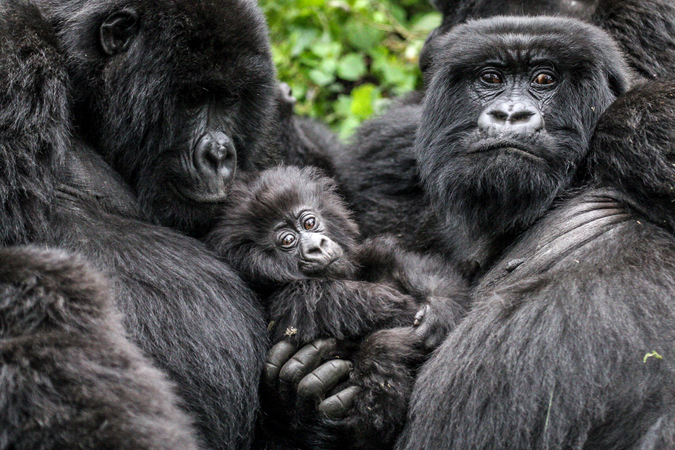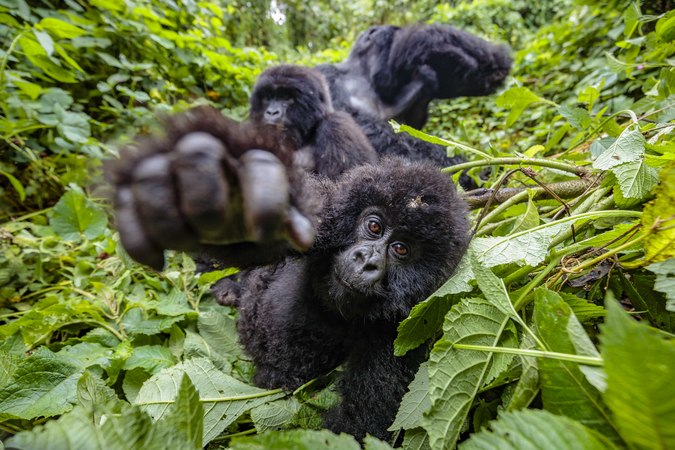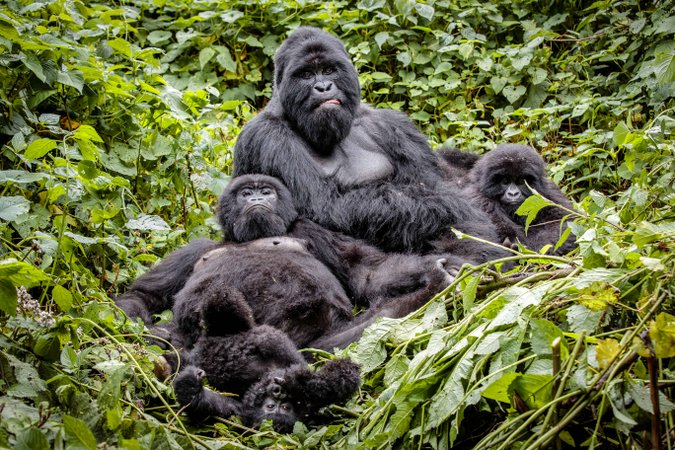
Media release from Greater Virunga Transboundary Collaboration
The population of mountain gorillas, one of the world’s most endangered species, is on the rise after a population survey was performed in the transboundary Virunga Massif, one of the two remaining areas where this critically endangered great ape is still found.
The survey results revealed that numbers have increased to 604 from an estimated 480 in 2010, including 41 social groups and 14 solitary males in the transboundary area. When combined with the published figure of 400 mountain gorillas from Bwindi Impenetrable National Park (where the rest of the sub-species is found), the total population sits at an estimated 1,004 mountain gorillas.
The survey was conducted by the Protected Area Authorities of DRC, Rwanda, and Uganda under the transboundary framework of the Greater Virunga Transboundary Collaboration, and supported by many partners and various donors.
As in the previous mountain gorilla census in 2010, survey teams walked pre-determined “recces” (reconnaissance trails) ensuring thorough coverage of all forest areas to sweep the Virunga Massif from the southwest to northeast and search for signs of gorillas, other key mammals, and illegal activities.
When fresh gorilla signs were detected, the teams followed the gorilla trail to locate three recent night nest sites. At each of these nest sites, the teams collected faecal samples that were analysed genetically to determine individual genotypes. The survey teams also collected data on signs and sightings of select mammals, such as elephants, and illegal activities, such as snares. While exercising caution due to the limitations of the study, there were no indications of declines in populations for the select mammals surveyed, including elephants, since 2010.

The increase in mountain gorillas inhabiting the Virunga Massif is attributed to the effectiveness of conservation policies, strategies, notably regulated tourism, daily protection and veterinary interventions, intensive law enforcement, community conservation projects, and transboundary collaboration among government institutions and NGO actors. Further, these results are a testament to the tireless effort of the rangers and trackers who daily protect and monitor mountain gorillas and their habitat, including those that have been killed in the line of duty.
It is also important to recognise the role of the communities that live in close proximity to these national parks who co-exist with mountain gorillas and contribute to conservation efforts.
Despite the rise in numbers, the two populations of mountain gorillas still remain relatively small and vulnerable to a potential rapid decline due to factors such as their limited habitat, climate change, dependency on resources in the park by people, and the risk of disease transmission.

To comment on this story: Login (or sign up) to our app here - it's a troll-free safe place 🙂.![]()






